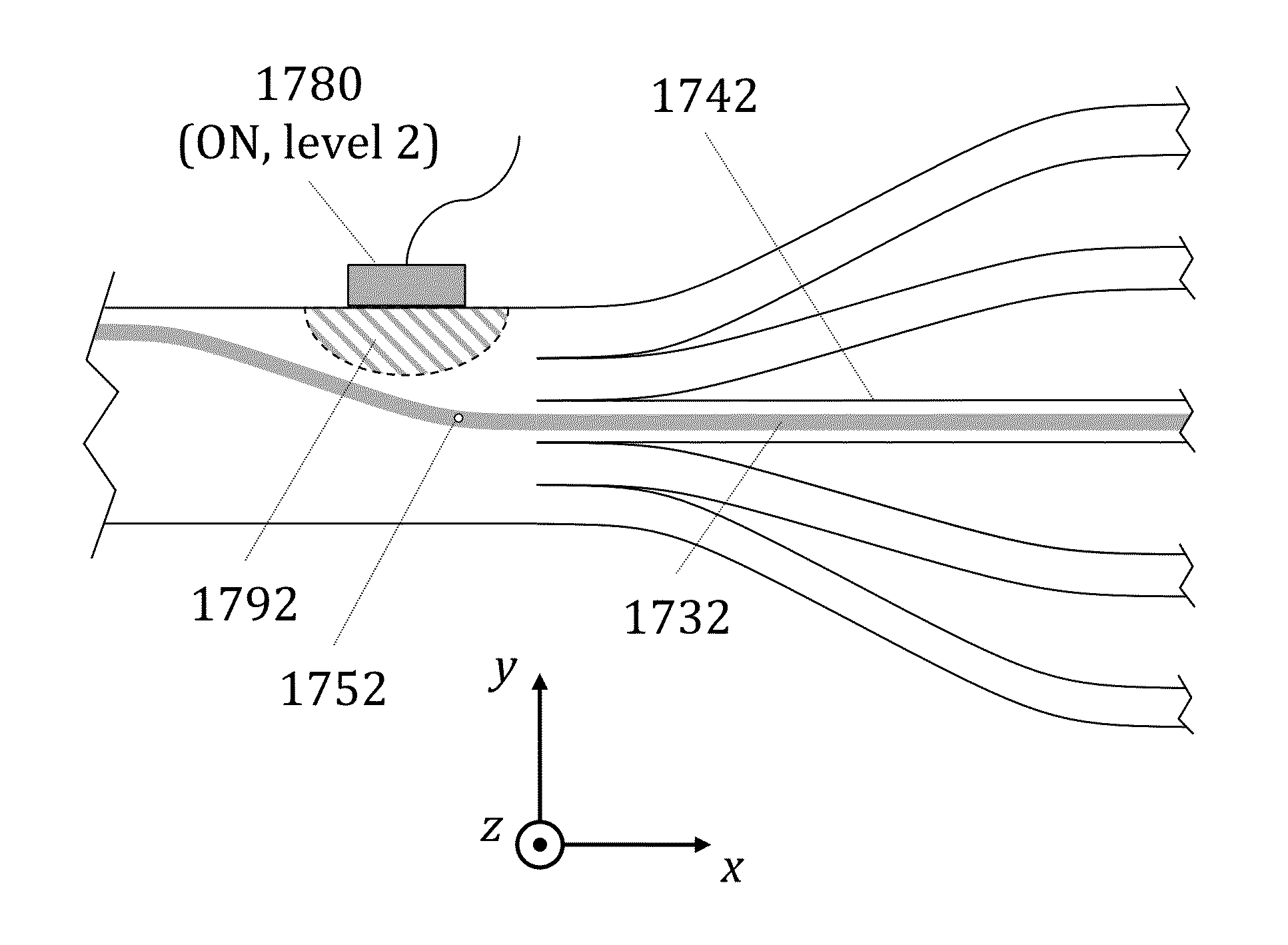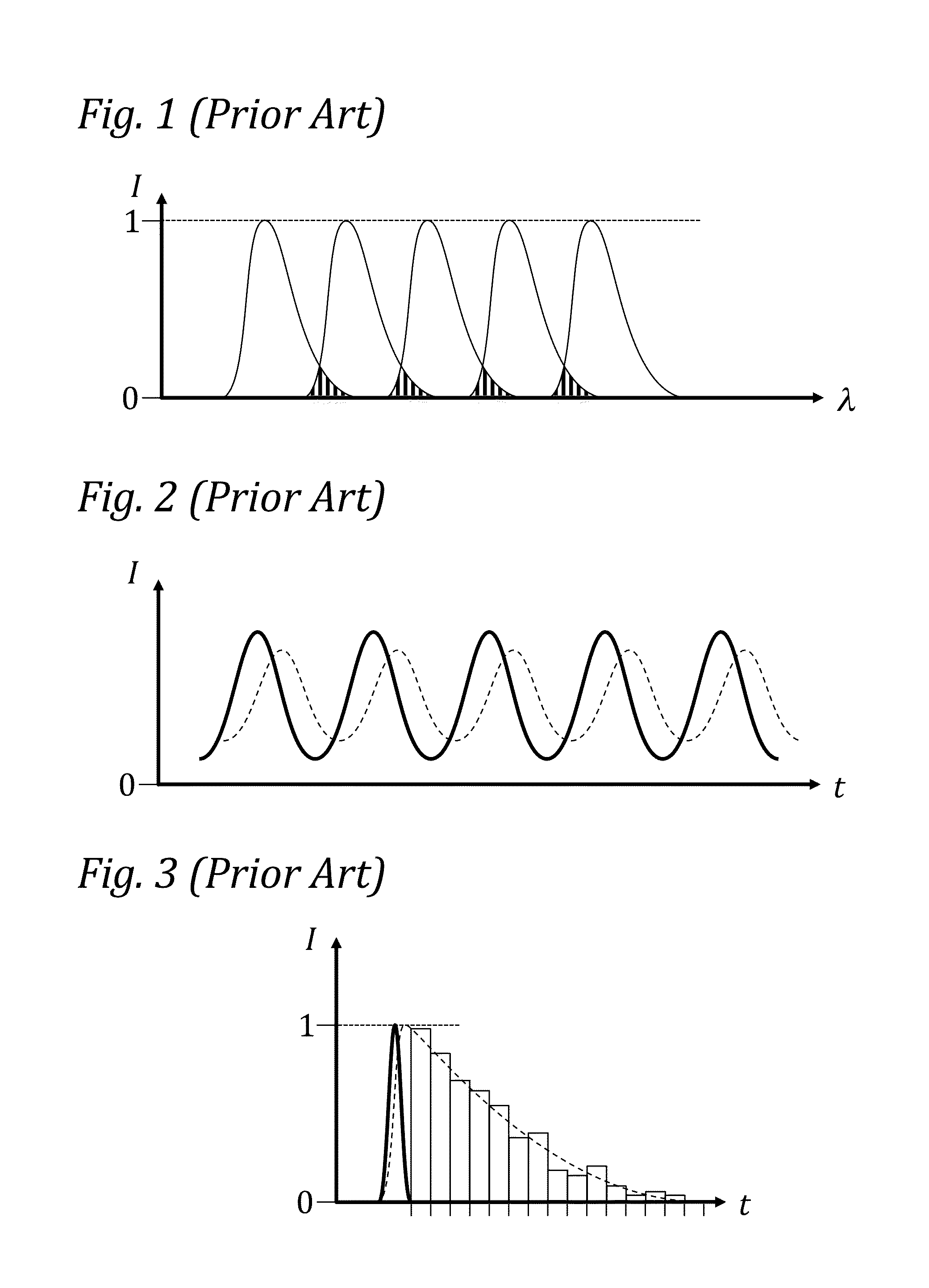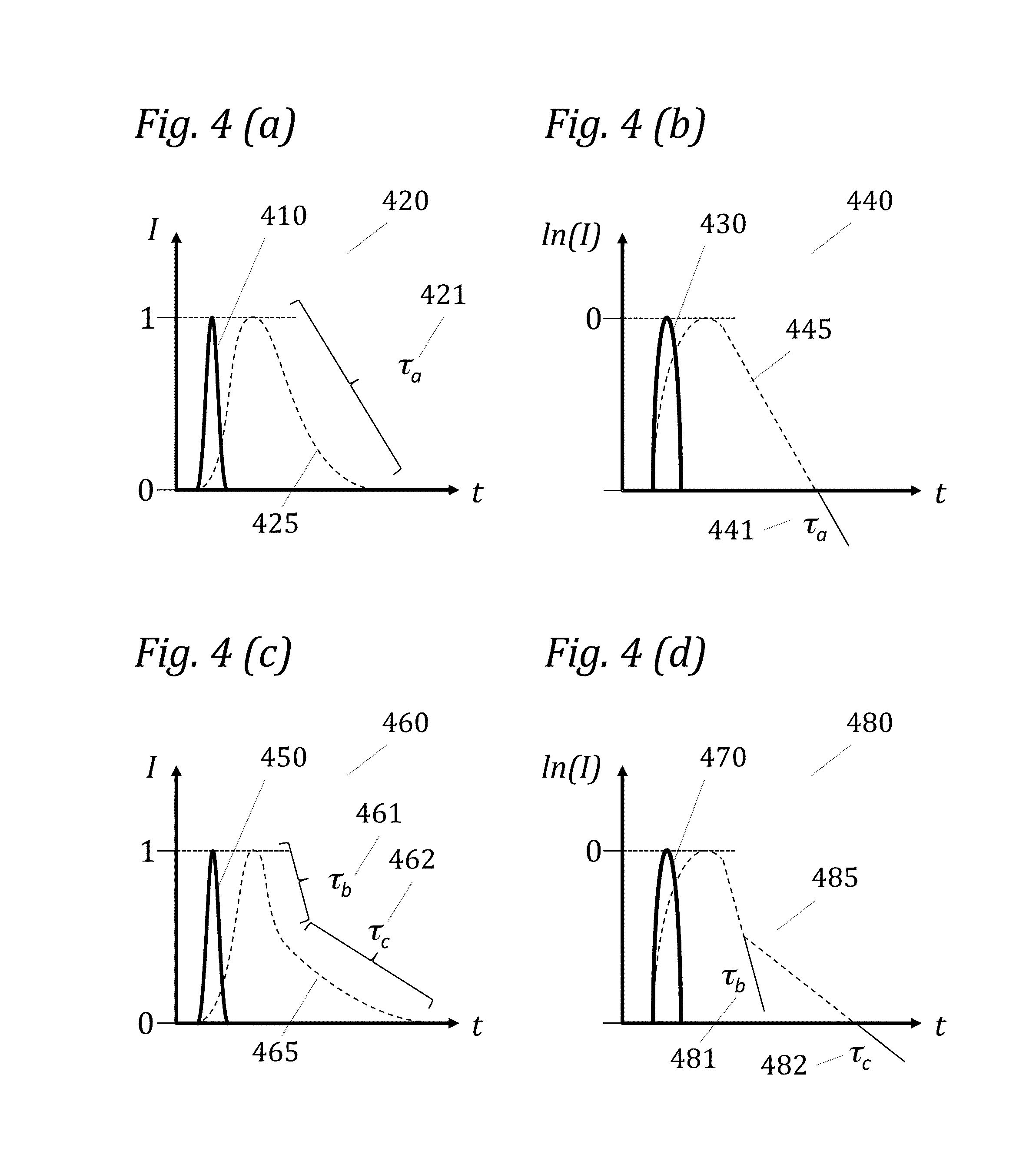Particle Analysis and Sorting Apparatus and Methods
a sorting apparatus and particle technology, applied in the direction of porous material analysis, instruments, suspensions, etc., can solve the problems of spectral overlap, the difficulty of keeping the detection of each color (and its associated tag) separate, and the general limitation of commercially available instruments to simultaneous detection of fifteen colors or less
- Summary
- Abstract
- Description
- Claims
- Application Information
AI Technical Summary
Benefits of technology
Problems solved by technology
Method used
Image
Examples
Embodiment Construction
[0084]One possible solution to the spectral overlap problem in highly multiplexed particle and cell analysis would be to utilize, beside spectral information, another type of information with which to index or encode the tags used to label cell characteristics. By adding an independent quantity that can be detected and measured, one can significantly increase the number of combinations available to label and identify cell types. There would follow then a reduced need to fit a large number of independent spectral bands into a limited region of the electromagnetic spectrum, since the total number of available combinations could be allocated based on two independent quantities instead of just one.
[0085]It is one objective of the present invention to provide fluorescence lifetime as that independent quantity, to be combined with spectral labeling to generate a highly multiplexed set of independent combinations with which to uniquely tag different cell characteristics or cell types with ...
PUM
 Login to View More
Login to View More Abstract
Description
Claims
Application Information
 Login to View More
Login to View More - R&D
- Intellectual Property
- Life Sciences
- Materials
- Tech Scout
- Unparalleled Data Quality
- Higher Quality Content
- 60% Fewer Hallucinations
Browse by: Latest US Patents, China's latest patents, Technical Efficacy Thesaurus, Application Domain, Technology Topic, Popular Technical Reports.
© 2025 PatSnap. All rights reserved.Legal|Privacy policy|Modern Slavery Act Transparency Statement|Sitemap|About US| Contact US: help@patsnap.com



